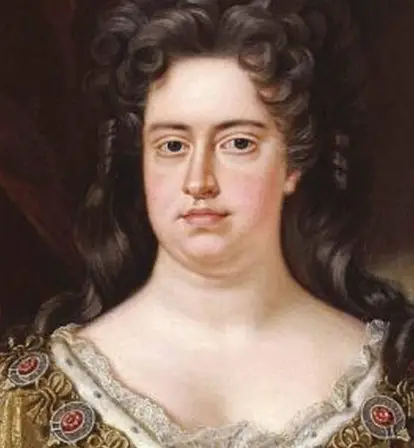Queen Anne was the first to rule over a united Britain, but her reign was marred by 17 failed pregnancies and accusations of a lesbian love triangle between her and two women in her court.
In conventional British history, Queen Anne of Great Britain is best remembered for unifying England and Scotland under the crown and bringing the War of Spanish Succession to a close. It’s also well documented how her reign was marred by a series of unfortunate, personal scandals. The “barren Queen,” as she came to be known, was unable to produce a living heir even after 17 pregnancies. Queen Anne’s husband, Prince George of Denmark, was also declared by her own father to be a bore.
And her court, as well as her affections, were torn by a slew of dramatic relationships.
Indeed, Hollywood wanted to recall this more salacious aspect of the burdened queen’s life in 2018’s The Favourite. The queen is portrayed as a petulant invalid engaged in a romantic — and sexual — relationship with her closest confidante and royal advisor, Sarah Churchill.
But how much of what was shown on the big screen is corroborated by the history books?
Queen Anne’s Unlikely Ascension To The Throne
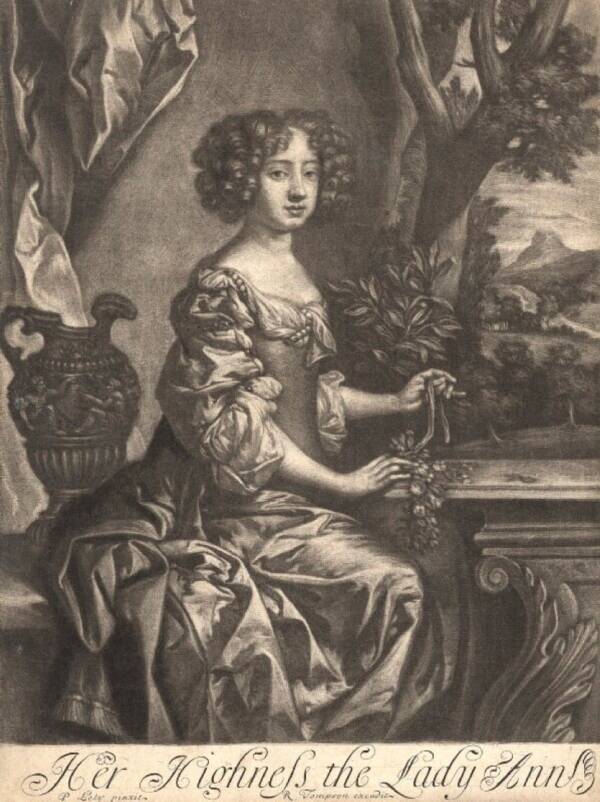
Royal Collection TrustAnne Stuart was the Anglican Protestant daughter of Catholic King James II, who was later ousted because of religious tensions.
As was true of many monarchs in history, Queen Anne’s path to the throne was set by multiple power changes. Power of the throne changed hands based on heredity and particularly in the time of Queen Anne, the country’s larger struggle for its religious identity.
Queen Anne was born Anne Stuart on Feb. 6, 1665, to James, Duke of York, and his first wife Anne Hyde. James followed the Catholic church but his older brother, King Charles II, was a Protestant. It was the religion of the King which dictated the early education of those in court, including young Princess Anne, who was consequently raised Protestant.
No one expected Princess Anne to become queen and so her education was primarily in languages and music, which was best suited for a young aristocratic but not so for an heir or heiress to the throne.
As a child of the royal court, Princess Anne’s romantic life was similarly regimented to her learning schedule. Princess Anne’s older sister Mary was arranged to be married to the Dutch Prince William of Orange and Anne to the Dutch Prince George of Denmark — who were both Protestants.

Wikimedia CommonsYoung Anne Stuart, who would unexpectedly become queen of England and Scotland.
Prince George proved to be something of a drip. Even Princess Anne’s father once said of him, “I have tried him drunk and I’ve tried him sober, but there is nothing in him.”
James would likely have been unhappy to have his daughters married into Protestant families anyway, but he bowed to his brother’s throne and for the most part, did not try to force the politics of the family towards Catholicism — at least until after his brother’s death.
Nonetheless, religious tensions grew after James remarried the Italian princess Mary of Modena in a Roman Catholic ceremony. His first wife, Anne’s mother, had died when Anne was just six.
It was during Princess Anne’s childhood that she met Sarah Jennings, later Churchill. Churchill was five years older than Anne and came into court in 1673 as a lady-in-waiting to her father’s second wife Mary Modena, and probably first met Anne, then only 8 years old, around that time.

Wikimedia CommonsSarah Churchill, Duchess of Marlborough, confidante to the Queen.
Churchill grew to be one of the young Queen Anne’s favorite ladies-in-waiting. According to biographer Anne Somerset in her book Queen Anne: The Politics of Passion, “Despite the fact that their personalities could hardly have been more different, Anne found herself irresistibly drawn to this self-assured and dynamic woman.”
Young Anne Stuart was shy and lacked self-confidence. On top of that, she never did get the proper education for one involved in politics. Indeed, when she did take the throne, Queen Anne had to be given pre-written speeches and remarks for important meetings. When she had to speak for herself, it was almost always a face-palm.
Perhaps that was why she was so drawn in by Sarah Churchill’s “vibrancy and exuberance.” The future royal reportedly found the young woman to possess “supremely attractive qualities.” Churchill was a complicated and fiery figure. She was once described to have “looked like a mad woman and talked like a scholar.”
Churchill later married renowned soldiers John Churchill, Earl of Marlborough, herself becoming a duchess.
When King Charles II died, James ascended to the throne as King James II of England and Scotland. The new Catholic king put Catholics into official positions which made his political circles uneasy. He also prosecuted leaders in the protestant Church of England.
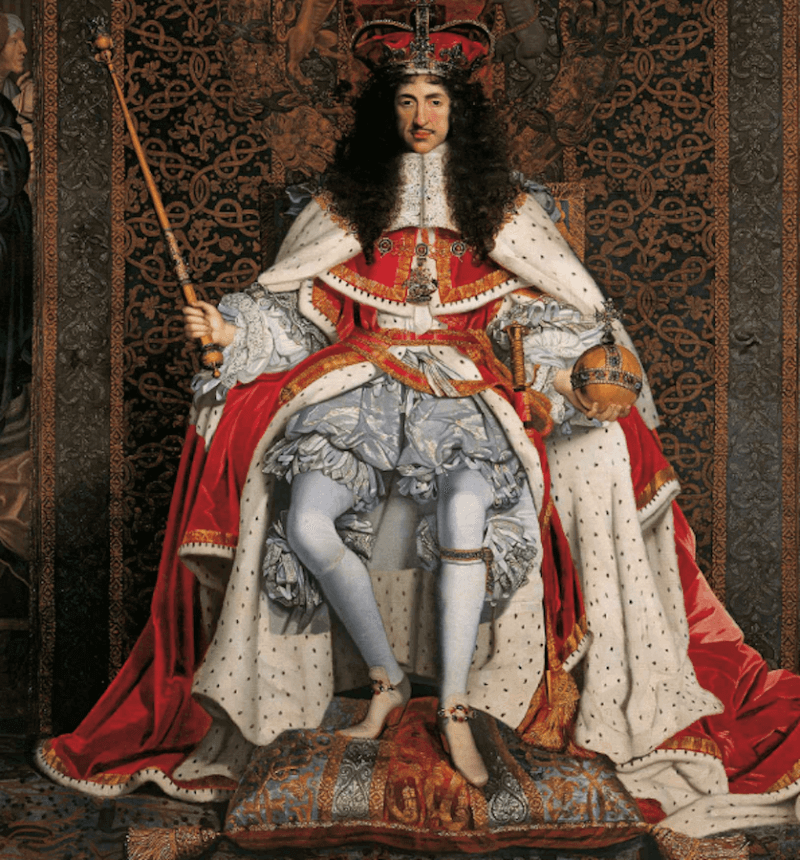
The EconomistAnne’s uncle, King Charles II, used his position of power to ensure that his nieces would be raised as Protestants.
In 1688, English nobles rebelled against King James II. They invited William of Orange, the Protestant husband to James II’s daughter Mary, to invade England and dethrone him.
William of Orange consequently became King William III of England. Anne had been fully aware, through correspondence with her sister, of William’s invasion plans and supported them.
When her sister Mary, through whom the royal lineage passed, died eight years later with no heir apparent followed by the death of her husband, King William III, the throne passed to Anne.
She thus became the unlikely queen of the British empire.
The Problem Of Queen Anne’s Children
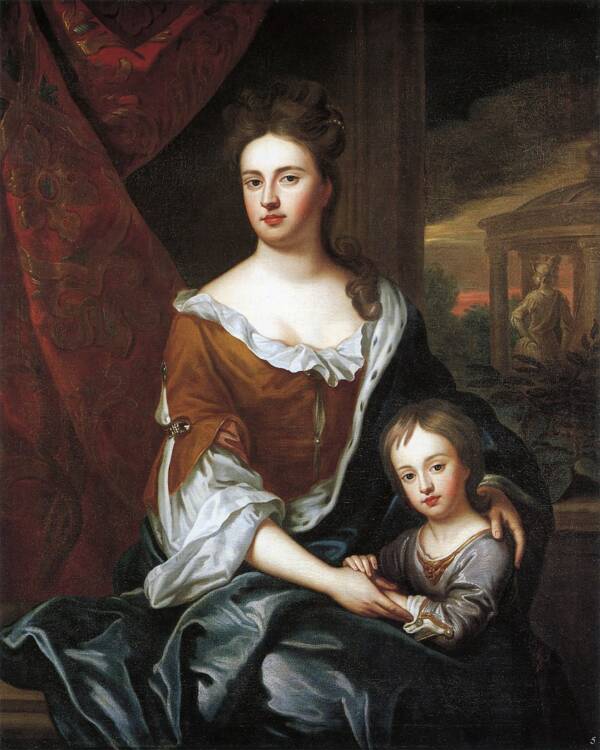
Wikimedia CommonsQueen Anne’s children, save for one, all died in infancy. The only one to make it beyond that still died at 11.
Queen Anne infamously — and tragically — suffered the loss of 17 pregnancies. Of them all, which included twins in some instances, only five produced live births, and only one of those survived beyond infancy.
Of all Queen Anne’s children, only her son William, the never-to-be- Duke of Gloucester, survived infancy. But he was weak from birth. He lived to only 11 before dying of various complications, possibly including smallpox.
While the many deaths of Queen Anne’s children were certainly scarring, the truth is that miscarriage and infant death was common among many other royals. Even Queen Anne’s own ascension to the throne was the result, in part, of many other lost pregnancies and ruptures in the royal lineage.
Her uncle, King Charles II, whose offspring would have claimed the throne ahead of his brother James, Queen Anne’s father, had no legitimate heir and so the lineage moved to his sibling. Although King Charles II had more than a dozen children with various mistresses, his actual wife Catherine had miscarried at least three times and never had a surviving child.
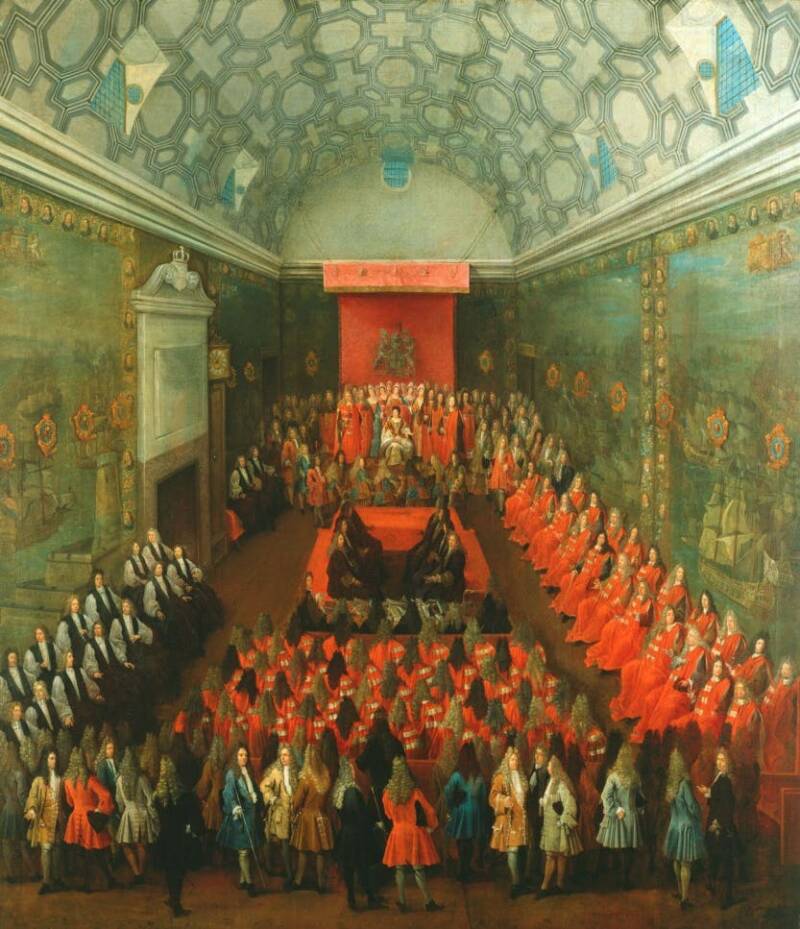
Wikimedia CommonsQueen Anne in the House of Lords.
Queen Anne herself was the fourth child of King James II’s first marriage. Her older sister Mary was only able to take the throne with her husband because their two older male siblings — who would have pushed both Anne and Mary out of the line of succession — did not survive childhood.
King James II’s second wife had at least 10 failed pregnancies before giving birth to a son, also James, who would survive into adulthood and was briefly recognized as heir to the throne. However, by then the political and religious tensions had developed such that a revolution deposed the Catholic family of their succession to the throne only months after the younger James’ birth.
Any child of King William III and Anne’s sister Mary would also have held the first claim to the throne but the pair suffered at least three miscarriages and never bore any surviving children.
In short, English succession in Queen Anne’s time was in turmoil almost exclusively due to lost pregnancies among four different marriages.
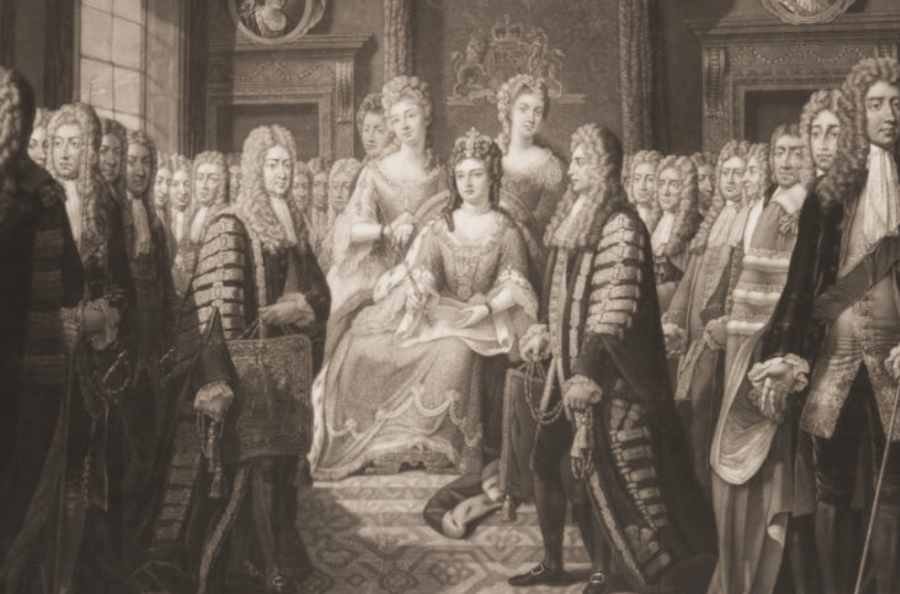
Wikimedia CommonsQueen Anne receiving the Acts of Union which ensured the safe succession of Protestant-only rulers for Britain.
Because Anne had already experienced an outstanding number of miscarriages and stillborns even before she took the throne and the threat of a Catholic ruler taking over continued to loom, Parliament knew they would have a succession crisis on their hands.
As a precaution, Parliament passed the Act of Settlement in 1701. The Act was clearly intended to secure a Protestant line and barred from the throne anyone who was Catholic or was married to a Catholic. Interestingly, this law barring Catholic marriages from the royal line was not repealed until 2013.
Queen Anne’s Health And Politics

Wikimedia CommonsDespite her private troubles, she had a successful reign and routinely met with Parliament to discuss British affairs.
While the history books may tout Queen Anne’s political victories, popular culture may rather discuss her famously bad health.
The bloated queen suffered from, among a slew of other discomforts, an undiagnosed case of the blood disease porphyria, as well as poor vision. An account from an unidentified guest of the queen described her appearance as such:
“… her face was red and spotted… she looked frightful, her gouty foot was tied up in some nasty bandages… she was in extreme pain and agony.”
https://www.youtube.com/watch?v=XvBUojP51DQ
She was described as “homely” and even on her coronation, a lavish and luxurious affair, the 37-year-old queen had to be carried in the ceremony due to an especially debilitating case of gout.
At least Queen Anne’s reign did have a lasting political impact on Great Britain. Upon King William III’s death on March 8, 1702, Queen Anne appointed John Churchill (ancestor to World War II Prime Minister Winston Churchill), Duke of Marlborough as her Captain-General, perhaps in part because he was a great soldier and the husband of her beloved confidante, Sarah Churchill.
Under the direction of the Duke of Marlborough, the British Royal army saw victories in the War of Spanish Succession in the 1704 battle of Blenheim, the 1706 battle at Ramillies, the 1708 battle at Oudenarde in 1708, and a battle at Malplaquet in 1709.

Wikimedia CommonsJohn Churchill, the First Duke of Marlborough, was a major factor in Queen Anne’s victory as a monarch — for a time.
The war, which was but a complicated series of alliances and changes in succession among the royal families of Spain, France, and Austria, had kicked off in 1701 and quickly spread to involve all of Europe and even the colonies in North America.
At first, Queen Anne continued this war aggressively, but after a series of victories under Marlborough, switched to a more diplomatic approach. The war eventually concluded with the 1713 treaty of Utrecht which was in large part possible because of the Queen’s decision to negotiate instead of fight.
Queen Anne was also the first to rule a united Great Britain. It was during her reign that the 1707 Act of Union brought England and Scotland together under a single crown. The union had been an ongoing discussion for decades but had stalled several times for various reasons, but Queen Anne’s government was able to restart those negotiations in 1706 and finally succeeded in forming a union that could be approved by both the English and Scottish parliaments.
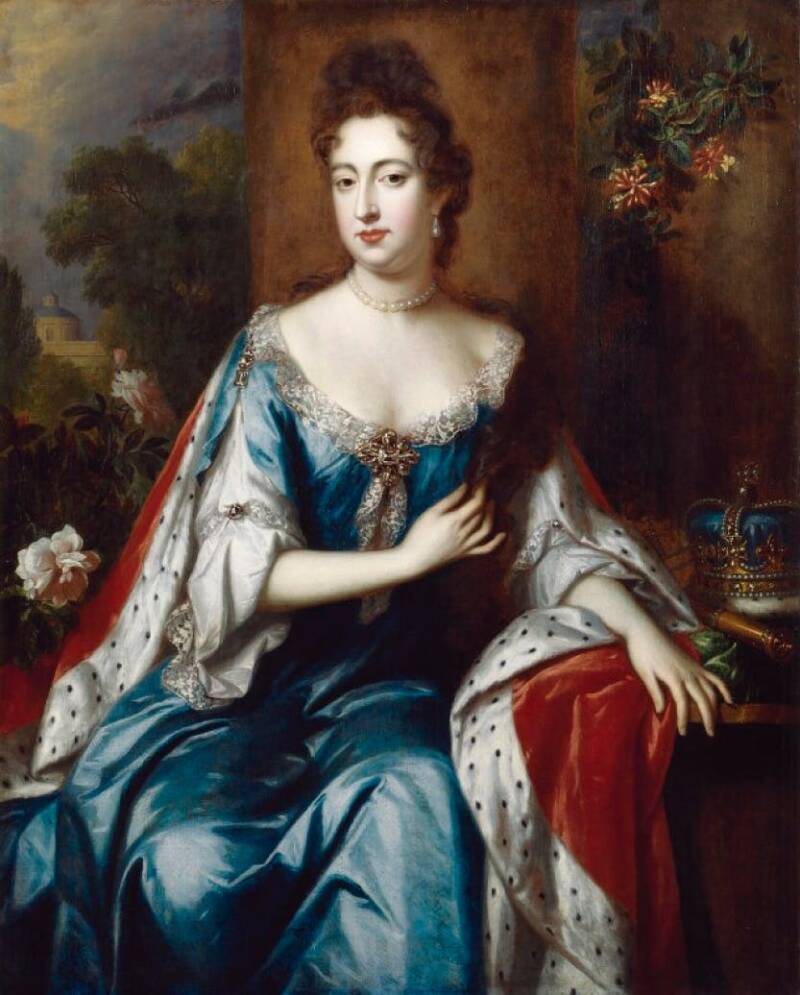
National Portrait GalleryQueen Anne and her sister, pictured here, had a falling out over the politics of John Churchill, the husband to Queen Anne’s most favorite Lady, Sarah Churchill.
Both agreements — the 1707 Act of Union and the 1713 treaties at Utrecht — did much to cement Britain’s economic strength over France.
Both milestones also secured a Protestant succession for England’s monarchy. First, they ensured that Scotland would not ally with Anne’s father, the ousted Catholic King James. Second, the end of the war ensured peace with France, which was an important Catholic monarchy and ally.
Unfortunately, the Duke of Marlborough became increasingly unpopular in Court. He and his wife were of the Whig party, which became the minority of Parliament throughout Queen Anne’s reign as the Tories took power.
At the end of 1711, the Duke was removed from his post and exiled to retirement. It was alleged that he stole public funds.
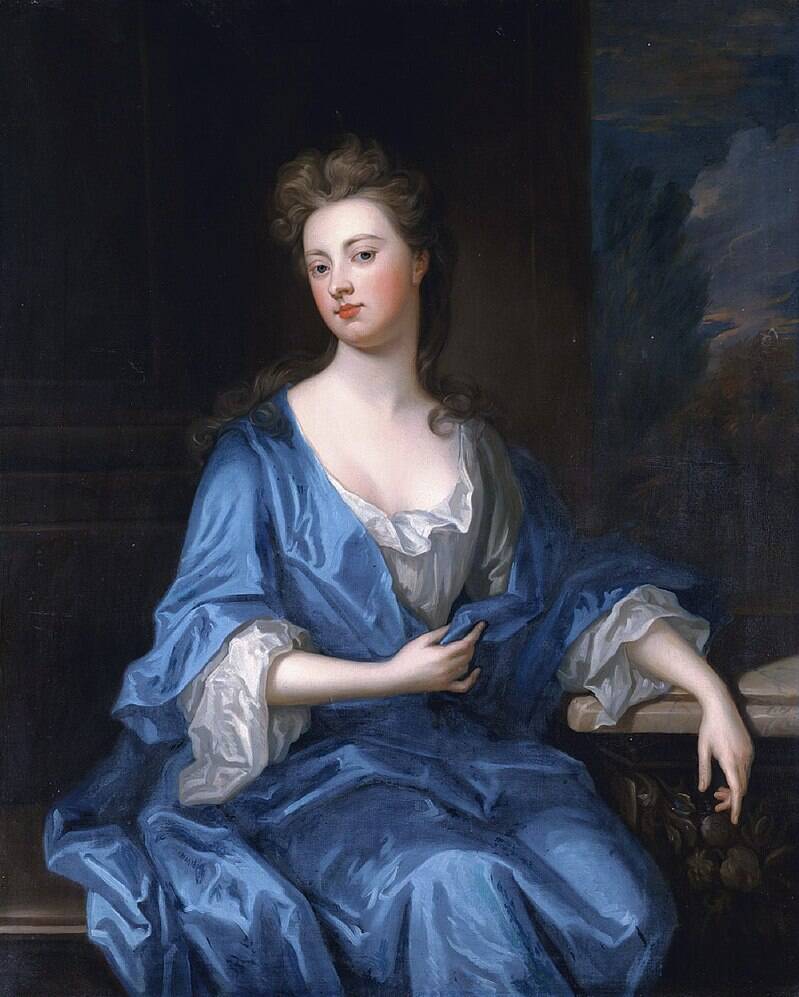
National Portrait GallerySarah Churchill would fall out of the Queen’s favor by 1707 as her cousin, the young Abigail Hill, moved in to replace her.
Marlborough’s downfall was not just a reflection of public and political sentiment about the war, however. His ousting followed closely on the heels of a rift between the Queen and her favorite: Sarah Churchill, the Duchess of Marlborough.
The Duke’s fall was, arguably, a casualty of this ruptured friendship.
A Complicated Friendship
https://www.youtube.com/watch?v=NUS0cTk0INE
The reign of Queen Anne is often discussed for her complicated and scandalized relationship with Sarah Churchill — and for good reason.
The pair were so close that some suspected that they may also have been lovers even before Anne became queen. By 1692 Princess Anne had written to her friend, “I had rather live in a cottage with you than reign empress of the world without you.”
At one point, the women wrote to each other almost four times a day.
“Oh come to me as soon as you can that I may cleave myself to you,” one of Queen Anne’s letters read. Another continued, “I can’t go to bed without seeing you… If you knew in what condition you have made me, I am sure you would pity.”
They even had nicknames for each other — Mrs. Morley and Mrs. Freeman — that they preferred as a substitute to the stuffy titles of “princess” and her lady. In so doing, the two also created a relationship of equals.
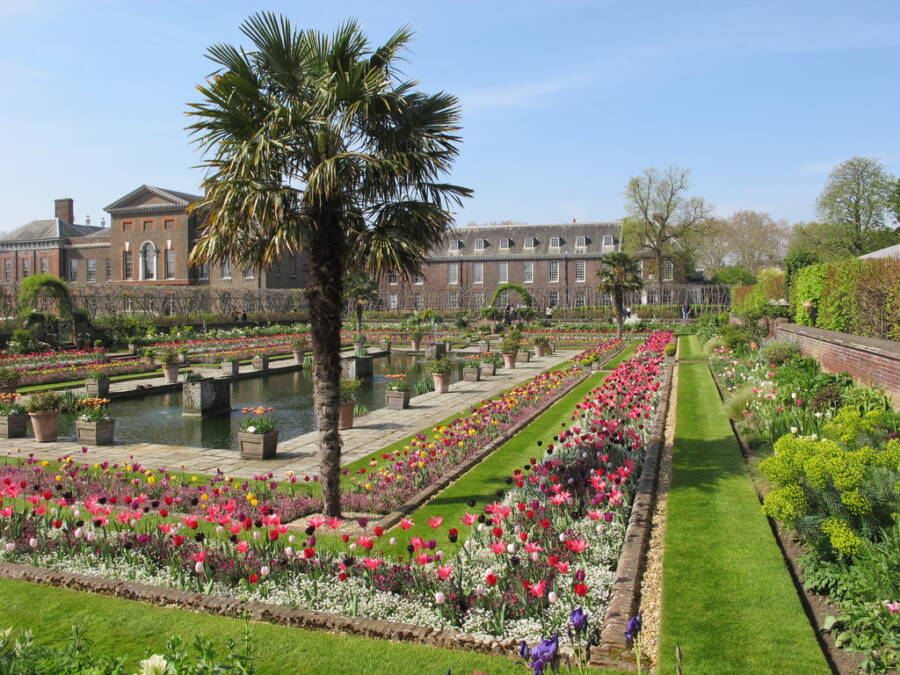
GeographThe sunken garden at Kensington Palace, where Queen Anne lived through most of her reign.
Besides the letters, there is no evidence of sexual contact between the two. Historians of England’s victorian times also note that romantic same-sex relationships were unremarkable back then, anyway.
Indeed, when such flirtations unfolded between a king or queen and a same-sex subject, it was simply a common way to express one’s undying loyalty to the crown. As Columbia professor Julie Crawford told The Cut:
“There wasn’t a radical separation between what we recognize as sexual intimacy and the other kinds of bodily intimacy with which people lived at the time, particularly for elite people, who had women who literally undressed them… Likeness was really at the center of positive ideas of union in the period — it was almost impossible to imagine a friendship between a man and a woman because of the differences between them. There was the notion that like attracts like. These were homo-normative societies where most social relations were between members of the same sex.”
In the case of Lady Churchill and Queen Anne, perhaps their intimate relationship was merely a prudent move on the duchess’ part to ensure her status as the future queen’s favorite.
Some believe that Churchill’s intimacy with the queen allowed her to domineer the Queen’s decisions in court, but still others dispute this. In spite of her low education, Queen Anne was a smart ruler, these skeptics declare, and she attended meetings with her ministers and Parliament in the House of Lords regularly.
Nevertheless, the queen needed someone she could trust to help her oversee Britain’s affairs. After Anne became queen, the duchess was promoted to multiple positions as Keeper of the Privy Purse, Groom of the Stole, and Mistress of the Robes — all major household offices that were available to women, belonged to Sarah Churchill at one point.

Royal Collection TrustSuffering poor health all her life, Queen Anne died in 1714 after enduring a series of strokes.
Lady Churchill even became the gatekeeper of the monarchy’s money. As a fervent Whig, Churchill savvily used her influence over the queen to advance the interests of herself and her husband — until the Parliament’s majority party switched to the Tories.
Enter Abigail Hill
Meanwhile, Queen Anne grew tired of her friend’s dominant temperament. When her husband died on Oct. 28, 1708, at Kensington Palace, Queen Anne fell into a deep depression. As James Brydges, Duke of Chandos described it: “His death has flung the Queen into an unspeakable grief, she never left him till he was dead, but continued kissing him the moment the breath went out of his body.”
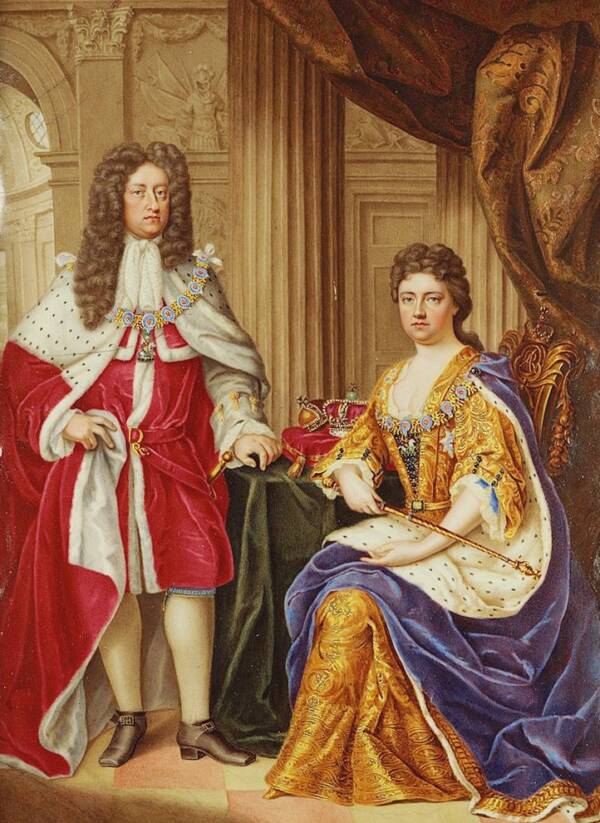
Wikimedia CommonsQueen Anne with her husband, Prince George of Denmark.
But Lady Churchill apparently had no patience for such suffering. The Lady urged the queen to leave his body that but that intrusive behavior soured the queen’s impressions of her former best friend.
This resentment eventually pushed the queen to find comfort with another woman in her company: Abigail Hill, Sarah Churchill’s cousin who had been brought in to the palace to work as a bedchamber maid.
It seemed Queen Anne had grown close to Hill for her tender demeanor, especially compared to Sarah Churchill’s blunt and often harsh personality. But Churchill remained in the dark about their growing intimacy until she learned of a secret wedding between Hill and the soldier and courtier Samuel Masham. By some accounts, Hill’s marriage had been a political tact between herself and Masham to gain further clout in the queen’s court over the Marlboroughs.
It worked.
Jealousy And Competition As Shown In The Favourite
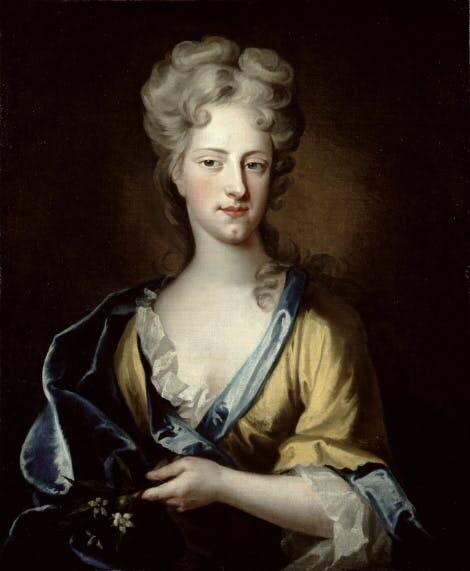
National Portrait GalleryIt was rumored that Abigail Hill, pictured here, engaged in “dark deeds at night” with the Queen, but these were likely just rumors started by the jealous Sarah Churchill.
The 2018 Oscar-nominated film about Queen Anne and her two rivaling favorites — Sarah Churchill and Abigail Hill — was a typical mix of factual history and Hollywood exaggerations. Nevertheless, the tensions, rivalries, and scheming that was depicted in the film in order to curry the favor of the queen was not unheard of during those times.
Churchill was indeed shocked to learn that the queen had given a chambermaid a dowry from the privy purse which she herself oversaw as well as redone the chambermaid’s lodgings into luxurious ones.
By 1707, their relationship had dissolved. The queen refused to address Churchill except in writing. Churchill attempted to blackmail Queen Anne with threats of releasing their letters. She also spread the rumor that the queen and Hill were sexually intimate.
Lady Churchill handed out to the court pamphlets of a ballad written by Arthur Mainwaring, a close friend, and fellow Whig, which read:
When as Queen Anne of great renown / Great Britain’s sceptre swayed / Beside the Church she dearly loved / A dirty chambermaid
O Abigail that was her name / She starched and stitched full well / But how she pierced this royal heart / No mortal man can tell
However for sweet service done / And causes of great weight / Her royal mistress made her, Oh! / A minister of state
Her secretary she was not / Because she could not write / But had the conduct and the care / Of some dark deeds at night.
In her 1742 memoir, on which the majority of The Favourite is based, Churchill wrote damningly that “Mrs. Masham [Abigail] came often to the queen when the prince was sleep and was generally two hours every day in private with her.” She also described entering the queen’s bedroom via a secret passageway and seeing Hill already there.
However, the insinuation in Churchill’s own writings and in the movie that the queen and Hill engaged in amorous trysts were likely false. Churchill’s memoirs were likely distorted to defame the queen.
“Anne was worn out by childbearing and in dreadful pain for much of the time, and in view of her manifold infirmities, it requires a strong effort of the imagination to conceive of her being brought by Abigail to a state of sensual arousal,” biographer Somerset explained.
“Her famed prudery, and her strong sense of Christian morality makes it all the more unlikely her relationship with Abigail carried a carnal element.”
Eventually, after a series of public fallouts between the queen and her estranged adviser, most of which were instigated by the latter, Lady Sarah Churchill finally resigned from the court in 1710.
The two would not reconcile before the queen’s death.
Queen Anne finally died in 1714 after suffering a series of strokes. George I, her second cousin, succeeded her on Britain’s throne. And though her unfortunate happenings in her private life have come to define her reign, it is important to remember her time on the throne was also marked by many progressions for the British empire.
After this look at Queen Anne, check out some more British history with this look at Queen Mary of the Scots, the woman tragically executed for being a threat to Queen Elizabeth’s throne. Then, discover the unlikely friendship between Queen Victoria and her Indian servant Abdul Karim.
